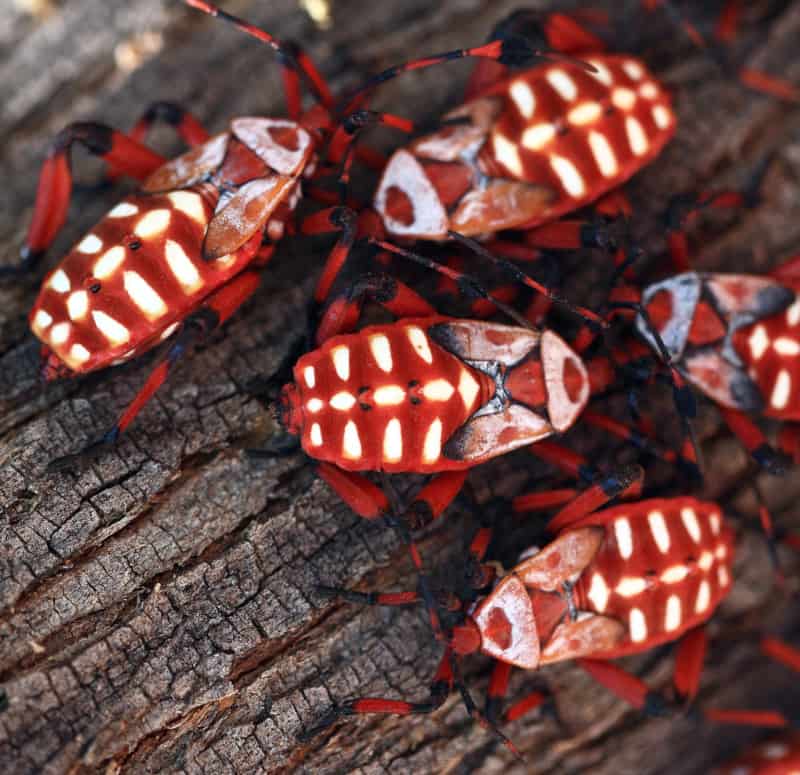
Giant Mesquite Bug Facts
- Firstly, this is the sincerely astounding, and appropriately named, Giant Mesquite Bug. It also remains a member of the scientific Order Hemiptera. As such, it constitutes what entomologists generally call a true bug.
- Fortunately for it, the insect appears to still be quite numerous, unlike many related species. Due to this fact, the IUCN currently does not have the Giant Mesquite Bug listed on its Red List of Threatened Species.
- Further, it remains the only member of its genus to be present in the United States. Regrettably, however, it also sometimes constitutes a pest species among local agriculturists. This occurs due to its particular feeding preferences.
Related Articles
Giant Mesquite Bug Physical Description
Most notably, the adults of the Giant Mesquite Bug appear much less colorful than do the nymphs. But, while the young appear far more colorful, the adults, quite obviously, grow much larger in size.
Further, the fully grown individuals attain an average body length of about 1.25 in 3.2 cm). In addition, unlike the young, adults have functional wings. Also, the wings show black, with yellowish veins. Yet the legs and antennae have red and black bands.
Meanwhile, the young nymphs display far brighter patterns. The back generally displays orange-red, with white spots. Additionally, the head is mainly red and black in color. Also, the legs show mainly red,with black at the joints and feet.
Finally, the species does display a slight degree of sexual dimorphism. However, the manner in which it does this remains somewhat uncommon. In this instance, the males have much larger femurs on the rear legs.
- Kingdom: Animalia
- Phylum: Arthropoda
- Class: Insecta
- Order: Hemiptera
- Family: Coreidae
- Genus: Thasus
- Species: T. neocalifornicus
Giant Mesquite Bug Distribution, Habitat, and Ecology
First of all, the dazzling Giant Mesquite Bug inhabits a limited, as well as specific habitat range. That’s because the gorgeous invertebrate only lives in the Sonora Desert, in North America.
Specifically, the beauty lives in a region from southwest Arizona to Baja California, in Mexico. However, the greatest concentrations occur in two areas. These consist of the southern tip of Baja, and the Tucson area in Arizona.
Furthermore, both the colorful nymphs and the adults of the species have an extremely specialized diet. As the common name clearly implies, all stages of the insect feed exclusively on the Mesquite tree.
In addition, it feeds on most parts of the host plant. These include the soft leaves, the sap, and seed pods, as well. However, and somewhat surprisingly, despite its voraciousness, it rarely harms the tree itself.
Finally, like most related insects, it has numerous predators. But, the primary one consists of the locally numerous Pallid Bat. For defense, it relies on two tactics. Firstly, adults possess relatively thick armor. Finally, however, the nymphs rely on noxious chemicals to deter predators.
Species Sharing Its Range
Check out our other articles on 4 Fantastically Fascinating Fungi, Pink Fairy Armadillo, Cocos Island, Jackfruit Tree, Spiny Bush Viper, Adelie Penguin, Indian Bullfrog, Calleta Silkmoth
